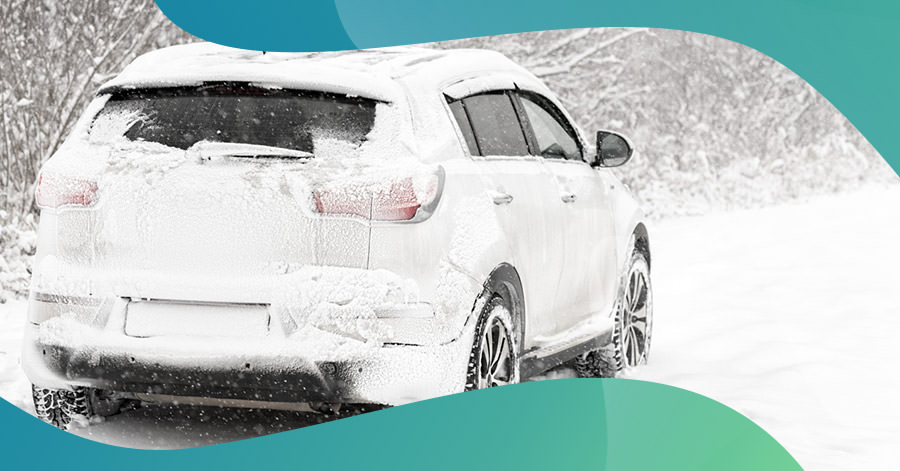The winter season is a complicated time for drivers. The snow and ice make it more difficult to drive, and the risk of an accident increases due to cars sliding all over the roads. By taking measures to improve your safety on the road, you reduce the risk of accidents and ensure that you are prepared for the difficult weather conditions you can expect during the winter driving months. Here are some winter driving safety tips to help you stay safe even when the conditions get dangerous!
Get your car serviced
According to the National Highway Traffic Safety Administration, or NHTSA, you want to check your car before the season of bad weather begins. Checking your car tires, assessing any leaks or problems, and getting a winter tune-up are all good initiatives to get your car ready for harsh winter weather.
Clean snow and ice off your car before driving
Failing to effectively clean snow or ice off your car before you hit the road can create hazardous driving conditions for you and others on the road. It can impair your vision, and also fall off your car and hit cars behind you, both of which could cause major accidents. Make sure you have a good ice scraper in your car during the winter months, and use your defrost features to hurry things along.
Keep useful items in your car
In addition to a good ice scraper, keep your car prepped with winter tools that will help you during days of heavy snow. A shovel, jumper cables, a flashlight, and emergency lights or flares are additional tools that are useful to have in case of car troubles. Keeping sand or cat litter in the car will also help if you are stuck and need extra traction to get moving. For a long trip, it is wise to bring extra food, water and blankets to ensure your safety if you get stuck and need to wait for help.
Be mindful when warming your car
There are usually two reasons why people warm up their cars—one is to warm up the engine, and the other is to warm up the interior so they don’t have to get into a freezing car. If you are letting your car run to warm up the engine, chances are you don’t need to. Unless you own a car with a carbureted engine, letting your car run to warm up the engine isn’t all that effective. The U.S. automobile industry changed over to fuel injection method in the 80s and 90s, and they’ll warm up faster and more efficiently simply by driving your car. There are, of course, exceptions. If you have a thick layer of ice and snow you need to melt off, by all means, let your car run for a bit!
If you’re running your car to heat up the interior, just be sure not to do it in an enclosed space, like a closed garage. Warming up a vehicle when there’s no outlet for the exhaust may increase the risk of accidental poisoning. All you have to do is open the garage door!
Something additional to consider when warming your car—you should always avoid leaving it running unattended. This is particularly important for our friends in Indiana and Tennessee—you will not be covered in the event your car is stolen when left unattended with the keys in the ignition switch. This is something that happens more than you might think, so please be careful!
Get rest before driving
While it’s never a good idea to drive when you’re tired, this is especially true in bad weather conditions. Do not drive your vehicle if you are exhausted or fatigued. The risks associated with driving while fatigued or tired increase during bad weather conditions. Alternatively, consider a taxi service or ask for a ride from a co-worker or friend.
Understand your brakes
Get used to using your brakes and learn how to avoid locking up your brakes during ice and snow. Follow the basic rule of tapping your brakes rather than slamming on them. While your car may have anti-lock brake features, you do not want to rely on this system when driving on icy roads. The icy conditions may limit the effectiveness of the assistance system, so make sure you practice gently tapping your brakes before icy weather conditions roll in. The practice helps you get a feel for your brakes and understand how your car will handle itself in a variety of weather.
Keep some distance between other vehicles
Do not get close to other vehicles during poor weather. Slow down and allow plenty of space between you and other cars. Never tailgate other vehicles, since it may result in an accident if the other car stops suddenly or you hit ice and cannot stop your vehicle. Expect the ice and snow to slow down the speed of your stop and plan ahead. A recommended distance of four car lengths is known to reduce the risk of accidents.
Drive slowly
Slow down and take your time. Driving slowly will help your tires maintain better traction on the road. It also helps you stay in control of your vehicle and limits the amount of sliding or slipping on the road.
Avoid cruise control
If you are planning a long trip or you use cruise control on the highway during your commute, then adjust to driving without cruise control in advance of the winter weather. Cruise control automatically accelerates and brakes to keep your car going at the same speed. This may result in skidding or accidents due to ice on the roads. Opt for manual control instead to limit the risks of an accident.
Do not use the parking brake
Avoid the parking brake when it is snowing, raining or icy. The brake is not as effective in those weather conditions and it may cause your car to slide down the road. If you have concerns about a hill or incline, then opt for a different parking space.
Staying safe doesn’t happen by accident
In winter conditions, you need to understand the risks and take measures to stay safe. By preparing in advance and taking steps to avoid potential risks, you will be set to conquer the winter months with ease. At Elephant, we like to reward our customers for being prepared and making safe choices. We have a whole range of discounts, not just for having a clean driving record, but even just for having common safety features on your car like a backup camera or Bluetooth! To make sure you and your car are covered beyond best driving practices this winter, get a quick quote with us online today.
This article is intended for informational purposes only. It does not replace or modify the information contained in your insurance policy.
Article last updated on June 23rd, 2023 at 2:37 pm

